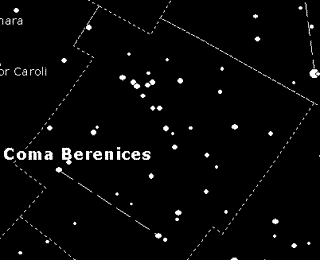
Coma Berenices
Abbreviation: Com
Genitive: Comae Berenices
Right Ascension: 12.76 hours
Declination: 21.83 degrees
Bernice's Hair, is the hair of Queen Berenice of Egypt, which became a constellation around 230 B.C.E. When her husband (and brother) Ptolemy Euergetes went off to war, she offered her hair as a sacrifice to the gods, if they would grant him a safe return. He did and she cut off her hair and placed it on the Altar in the temple of Venus. The locks were stolen and placed among the stars, some say Venus herself was the thief, while other think it was just an astronomer named Conon, who made up the whole story in order to comfort Berenice when she heard of the theft. Some other versions of the story said that the hair was turned into a hair-star, or comet. The origns of the constellations actual position in ancient times are actually unknown, some controversy surrounded the location, until Tyco in 1602 settled the matter by recording its present position. The ancients had the constellation overlapping with either Leo's tail or Virgo.
Best Known Stars
(Yale Bright Star Catalog)| Common Name or Bayer Number 1 |
RA | DEC | Magnitude 2 |
|---|---|---|---|
| BET COM | 13.00:11.00:52.39 | +27.00:52.00:41.40 | 4.26 |
| 12 COM | 12.00:22.00:30.31 | +25.00:50.00:46.08 | 4.79 |
| 23 COM | 12.00:34.00:51.06 | +22.00:37.00:45.18 | 4.81 |
| 31 COM | 12.00:51.00:41.92 | +27.00:32.00:26.48 | 4.94 |
| 24 COM | 12.00:35.00:7.75 | +18.00:22.00:37.33 | 5.02 |
| 20 COM | 12.00:29.00:43.23 | +20.00:53.00:45.90 | 5.69 |
| 39 COM | 13.00:6.00:21.22 | +21.00:9.00:12.31 | 5.99 |
| 32 COM | 12.00:52.00:12.25 | +17.00:4.00:26.04 | 6.32 |
| 3 COM | 12.00:10.00:31.62 | +16.00:48.00:33.29 | 6.39 |
Deep Sky Objects
(PAS Catalog)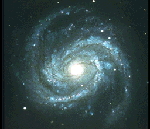
M-100
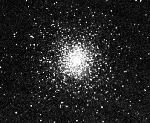
M-53
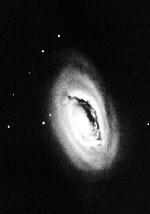
M-64
M-64. The 'Blackeye' Galaxy (NGC 4826) measures 7.5' x 3.5', and can be located about 1 degree ENE from 35 Comae. The structure is unusual and I have to admit the first time I saw it I thought it to be an eye winking at me (maybe it was just late at night). It is rated as one of the brightest spiral galaxies visible. The distance to M64 is between 20 - 25 million light years.

M-85

M-88

M-91
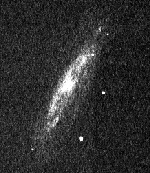
M-98
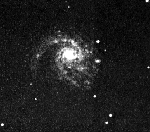
M-99
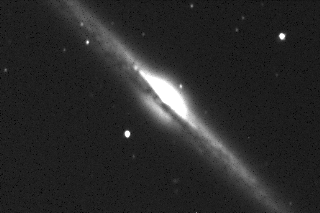
NGC-4565
NGC 4565. Palomar has a famous picture of this edge on spiral, and NGC 4565 is probably the largest example of an edge on spiral. It can be found 3 degrees from 17 Comae and less than 3 degrees from the North Galatic Pole. The image is good in small telescopes of 6 inches or more.
Other Deep Sky Objects
(Saguaro Astronomy Club Catalog)| Object | R.A. | Dec. | Object Type 3 | Mag. | Uranometria | Tirion |
|---|---|---|---|---|---|---|
| NGC 4254 | 12 18.9 | +14 26 | GALXY | 09.9 | 193 | 13 |
| NGC 4321 | 12 23.0 | +15 50 | GALXY | 09.4 | 193 | 13 |
| Mel 111 | 12 25.0 | +26 00 | OPNCL | 01.8 | 148 | 07 |
| NGC 4382 | 12 25.5 | +18 12 | GALXY | 09.1 | 148 | 13 |
| NGC 4494 | 12 31.3 | +25 47 | GALXY | 09.8 | 148 | 07 |
| NGC 4501 | 12 32.1 | +14 26 | GALXY | 09.6 | 194 | 13 |
| NGC 4559 | 12 35.9 | +27 58 | GALXY | 10.0 | 149 | 07 |
| NGC 4565 | 12 36.3 | +26 00 | GALXY | 09.6 | 149 | 07 |
| NGC 4725 | 12 50.4 | +25 33 | GALXY | 09.4 | 149 | 07 |
| NGC 4826 | 12 56.7 | +21 41 | GALXY | 08.5 | 149 | 07 |
| NGC 5024 | 13 12.9 | +18 10 | GLOCL | 07.7 | 150 | 14 |
| NGC 5053 | 13 16.4 | +17 42 | GLOCL | 09.8 | 150 | 14 |
Variable Stars
(General Catalog of Variable Stars)| GCVS ID | R.A. (hh mm ss.ss) |
Dec. (deg mm ss) |
Variable Type 4 | Mag. Min | Mag. Max |
|---|---|---|---|---|---|
| UU Com | 12.00:28.00:30.80 | +24.00:50.00:36.00 | ACV+DSCTC | 5.46 | 5.41 |
| AI Com | 12.00:26.00:25.00 | +26.00:11.00:22.00 | ACV+DSCT: | 5.40 | 5.23 |
| FM Com | 12.00:16.00:30.90 | +26.00:17.00:9.00 | DSCTC | 6.48 | 6.40 |
| FS Com | 13.00:3.00:56.60 | +22.00:53.00:2.00 | SRB | 6.10 | 5.30 |
| GK Com | 11.00:57.00:31.20 | +19.00:41.00:53.00 | SRB | 7.13 | 6.84 |
| GN Com | 12.00:21.00:48.10 | +26.00:22.00:32.00 | ACV: | 5.18 | 5.15 |
| HH Com | 13.00:16.00:14.50 | +26.00:37.00:41.00 | ACV | 7.85 | 7.77 |
Double Stars
(Saguaro Astronomy Club Catalog)| Name | R.A. (hh mm.m) |
Dec. (deg mm) |
Mag 5 | Sep 6 | PA 7 | Tirion | Uranometria |
|---|---|---|---|---|---|---|---|
| STF 1596 | 12 04.3 | 21 27 | 6.0, 7.5 | 3.70 | 237 | 7 | 148 |
| STF 1633 | 12 20.6 | 27 03 | 7.0, 7.1 | 9.00 | 245 | 7 | 107/ 108/ 148 |
| STF 21 | 12 28.9 | 25 54 | 5.4, 6.7 | 145.30 | 251 | 7 | 148/ 149 |
| STF 1657 | 12 35.1 | 18 22 | 5.2, 6.7 | 20.30 | 271 | 13/ 14 | 148/ 149 |
| STF 23 | 12 52.2 | 17 04 | 6.5, 6.9 | 196.50 | 50 | 13/ 14 | 149/ 194 |
| H 70 | 13 30.8 | 24 14 | 7.5, 8.0 | 73.20 | 258 | 7 | 150 |